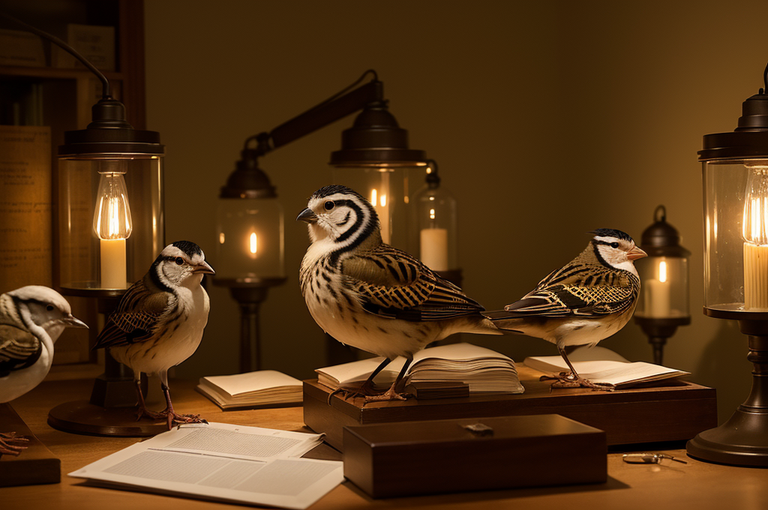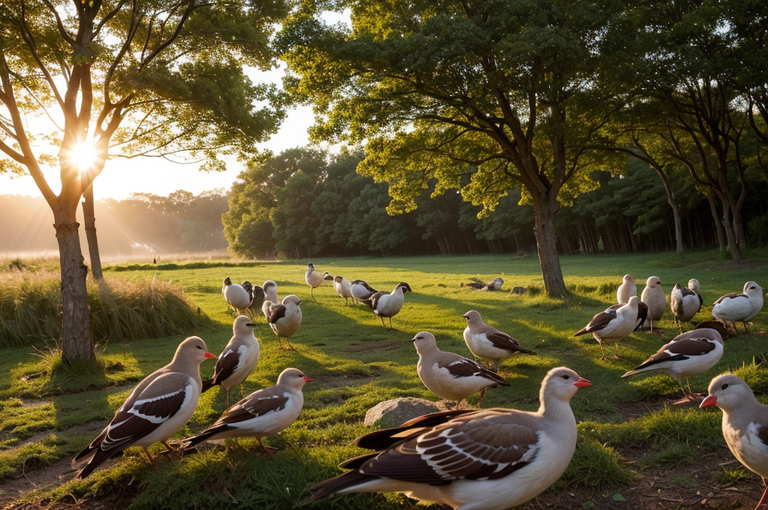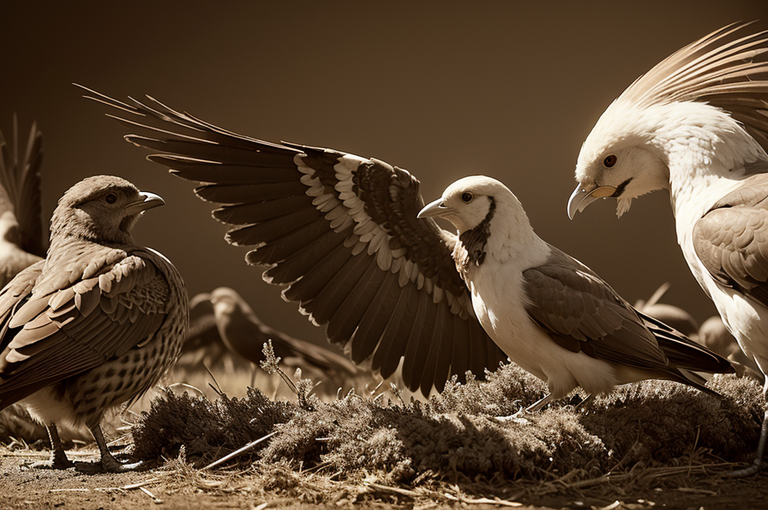Unraveling Avian Influenza: Impact on Birds, Threat to Humans, and the Importance of Prevention Measures

The article explores the global impact of avian flu, highlighting its effect on wild bird and poultry populations, the potential risk to humans, necessary prevention measures, and the need for increased detection & monitoring.
Understanding Avian Influenza
There’s a tranquil serenity in the pre dawn light that envelopes you in an enchanting hush, a peaceful interlude before the forest awakens. This serene wilderness often witnesses the murmur of chirping birds and fluttering feathers an avian symphony I’ve learned to understand, and love immensely. But recently, a new concern has fluttered into this sanctuary of nature the avian influenza commonly known as bird flu.
The issue of bird flu in wild birds is a subject not often explored, but certainly one that deserves attention.
Definition and Description of Avian Influenza
Avian Influenza, the scientific term for bird flu, is a severe viral disease that grips not just domestic poultry but also the birds found in our wilderness. It’s often mistaken as a concern solely for poultry farmers, but let me assure you it goes beyond chicken coops and extends its malicious grasp to the wild, our forests and the creatures within them.
Occurrence and Impact of Avian Influenza
The consequences of this viral invader are dreadful, having the ability to evolve and morph itself, thereby possessing the potential to threaten mammals, including us, humans. Its reputation, based on the havoc it can potentially wreak, seemingly makes it a major adversary for all life forms.
Risks of Avian Influenza to Humans
While the risk it poses to humans is relatively low, it still floats in the realm of possibility. Prolonged unprotected contact with infected birds enhances the chances of humans contracting the deadly flu. It is not an immediate fatal blow, but the potential lurks and makes it a point of concern.
As we walk through this enlightening journey of exploring bird flu in wild birds together, let’s focus on the facts, debunk myths, and approach this challenge honestly and bravely.

The Panzootic Outbreak of Avian Influenza
As with the morning’s early notes of a warbler’s song come dawn, a chilling murmur spread across the globe, resonating with a menacing tone. This panzootic advent brought an eclipse over five continents, shadowing the lives of wild birds and poultry farms alike. Akin to a capricious gust spreading winged seeds, the devious wild birds avian flu scattered its deadly particles a daunting scale and scope invisible to the naked eye but all too real.
Scale and Scope of the Panzootic Outbreak
The avian flu outbreak has cast a worldwide disaster, not unlike the sprawling migrations I’ve tracked from the windswept Arctic tundra to the exotic terrains of South Africa. Alas, with this panzootic shadow, there were no glorious stories of survival or triumphant returns, only silence and the grim toll of millions of vanished beaks and feathers.
Impact on Wild Birds and Poultry Farms
The tragedy struck equally, a poetic yet cruel equality that leveled both wild and domestic feathered kin. The warblers and thrushes, the chickens and ducks, all entwined in an unforeseen dance of death.
Insights on the Direct and Indirect Transmission
If one were to imagine the avian world as a bustling metropolis of tweets, squawks, and coos, consider the wild birds as the silent carriers rather paradoxical, isn’t it? These natural reservoirs for the virus seamlessly flowed into the lives of domestic poultry, subtly composing a remorseless symphony of disease transmission.
Importance of Detection and Monitoring
Borrowing from my many dawn chases, I’ve learned that the avian flu is not simply a threat confined within cages, it also threatens bird flu wild birds in environments spanning the globe, even reaching our beautiful U.S. horizons. In essence, the danger it presents underscores the need for increased vigilance and advanced monitoring methods.
Current State of Detection Efforts
Like meticulous birdwatchers, scientists maintain a constant watch, ensuring the virus doesn’t sneak past unnoticed. The present picture of detection efforts, much akin to observing birds in their natural habitats, is a constant unveiling of both challenges and triumphs. Such engagements are certainly not as poetic or charming as watching rosy dawns break at a rocky shoreline, but they are vital nonetheless.
Role of Surveillance in Controlling Avian Influenza
Since avian flu, like our feathered friends, has no respect for borders, a global network of surveillance forms a crucial part of our defense. This task aligns with similar meticulousness as spotting the elusive Eastern Whippoorwill in moonlight. It requires patient surveillance to control the flu’s vicious dance across bird species and to curb any potential pandemics.
Need for Research and Funding
Much like ornithology calls for keen observation, understanding and controlling the spread of avian influenza requires funded research, agility, and creativity in our approaches. The backing of research is of utmost importance, we must navigate this threat with the precision of an owl in flight silent and effective.
Our collective aim should be to fashion an ecosystem that respects the solemn song of the Eastern Meadowlark as well as the harmony in a global health chorus. It’s a delicate but essential balance. To protect all birds from the avian flu requires a blend of continuous surveillance, detection efforts, and consistent funding that propels research.

Avian Flu Prevention Measures
As an ornithologist, I’ve observed the wonder of bird flight, their plumage shimmering in the morning sun and simple yet important measures, like preventing contact between poultry and wild birds, is crucial in controlling diseases like Avian Flu. It’s a simple step, just like how you’d avoid touching a sick individual to prevent the spread of the common flu. Both seagulls and wild geese are large birds and beautiful to watch, but direct contact between poultry and these wild birds should ideally be avoided to reduce risks.
Preventing Contact Between Poultry and Wild Birds
Imagine your backyard, with chickens pecking away, suddenly visited by a majestic wild bird. It’s a scene straight from the wild, but it’s also the kind of circumstance that can trigger an outbreak. Preventive measures like fencing or protective nets could really help.
Use of Personal Protective Equipment (PPE)
When handling sick or dead poultry, you might feel a pang of sorrow but remember, it’s vital to take care. Your noble act could prove to be a risk, if not done properly. Hence, arm yourself with PPE’s, just as a soldier gears for battle before stepping into the field.
Extra Measures in Handling Infected Birds
Infected birds cast a dark shadow on the otherwise vibrant avian landscape. This is where biosecurity measures step in, like a knight in shining armor, to curb the spread. Proper disposal of carcasses, sterilizing equipment, and quarantining infected birds are some steps you can take.
The virus, commonplace among wild aquatic birds, can indeed infect domestic poultry and occasionally humans too. Prevention then takes the lead role in this play, casting an imperative preventive measures net over the avian universe. This, coupled with our love for these feathered creatures, can ensure a safer and healthier aviary world, kunited under the same cerulean sky.
Impact of Avian Influenza on the Poultry Industry
The whisper of dawn is no longer the same—the robust twitter of hens replaced by silence. It saddens me as an ornithologist, yes, but it’s the painful throb in my heart as a human that leaves me breathless. The bird flu in wild birds, specifically the avian flu, has cast a shadow over our feathery friends. This means distress not just for the birds but also significant losses in poultry farming worldwide. Large birds, both seagulls and wild geese, are major victims, and the domino effect is real and inevitable.
Losses in Poultry Farming Due to Avian Influenza
Poultry farms now resemble ghost towns, devoid of the lively clucking and flapping wings, all thanks to wild birds avian flu. The phrase ”economic loss” does little justice to the depth of the damage. We are not merely facing a commercial pitfall. We are witnessing an entire life cycle disrupted, suffocated, cut short. The sprawling green landscapes now teem with the ominous silence of the bird flu wild birds, echoing the deep losses in revenue.
Avian Flu and Increase in Egg Prices
The consequences of the avian flu outbreak are flapping their dark wings over our breakfast tables as well. With an alarmingly reduced availability of eggs, the prices have soared almost as high as a heron—incomprehensible for me, dramatic for egg lovers.
Future of Poultry Farming in Light of Avian Influenza
There’s a saying among bird watchers: ”In nature, nothing is certain.” And never before has it rung so true. The future of poultry farming, in the clinging shadow of avian influenza, is uncertain at best. We’d do well to revisit our preventive measures and understand the heavy impact on the industry’s economy.
Yet, as I watch the dawn break, I fear not. Birds have always represented hope for me. It is time we return the favor. It is time we respond—not with fear, but with resolve. To heal. To protect. To fly once more.


